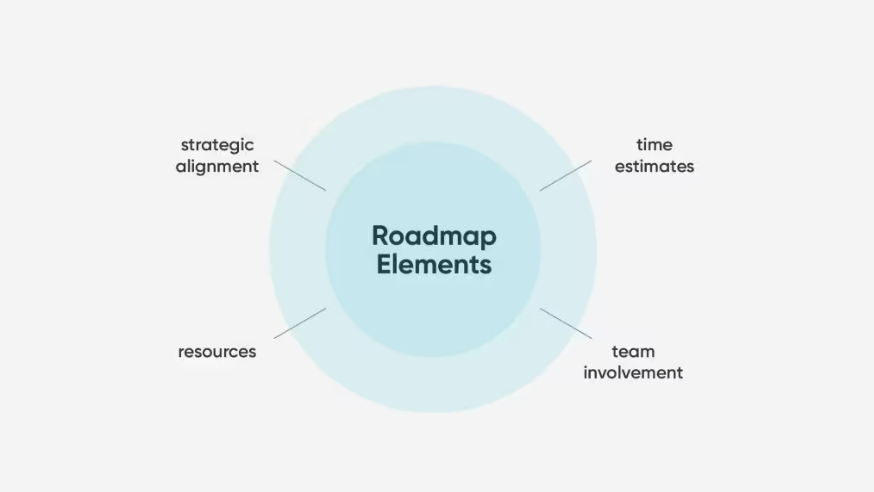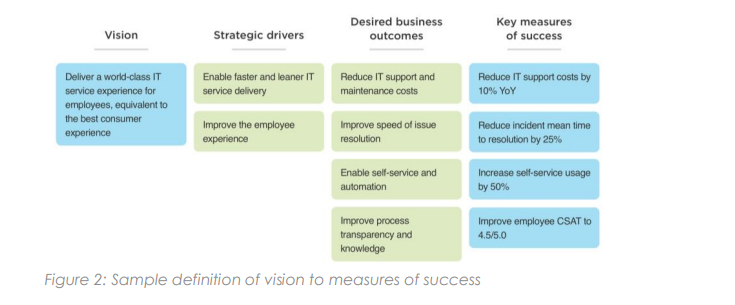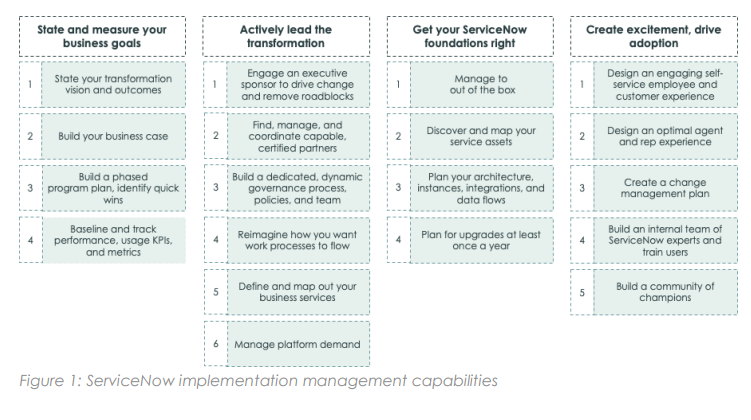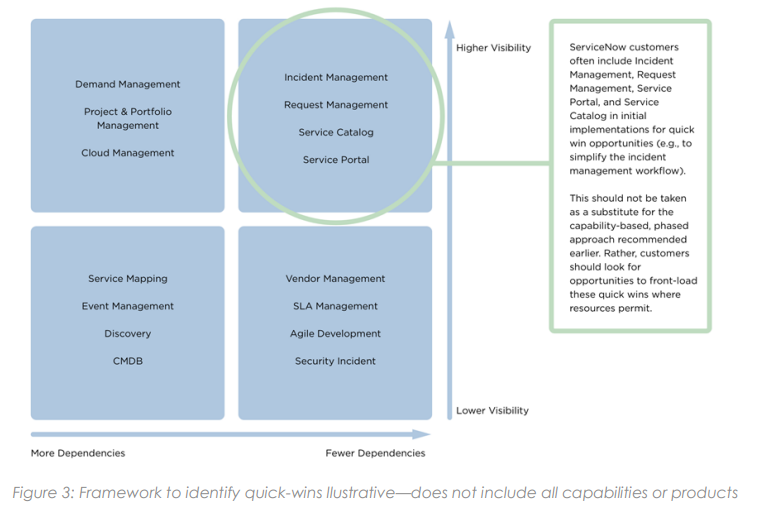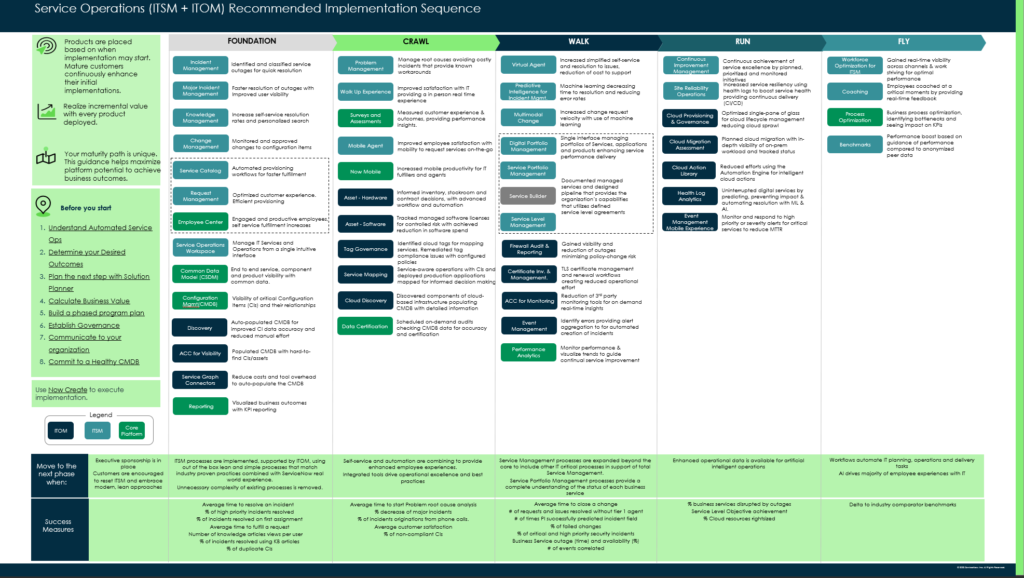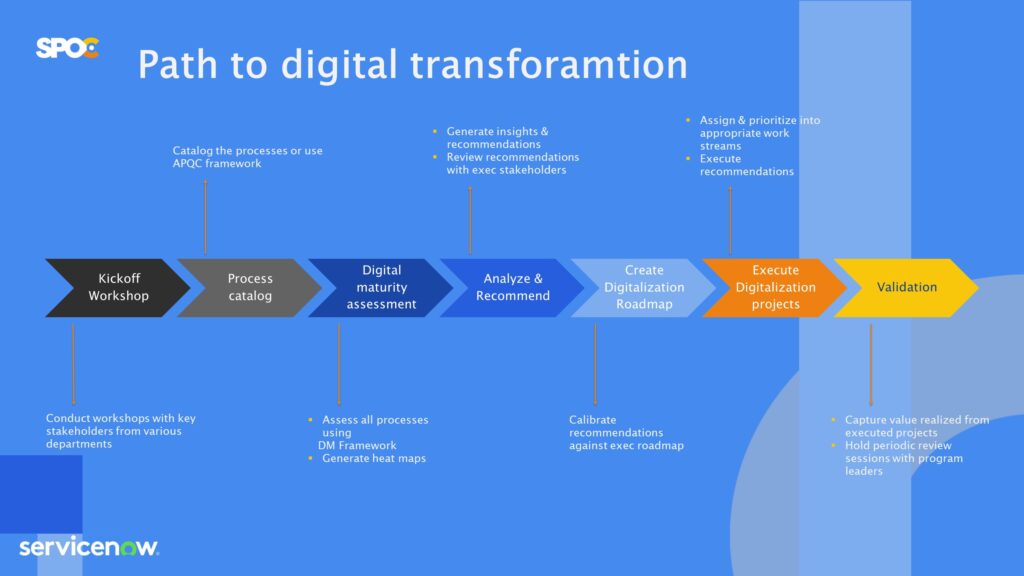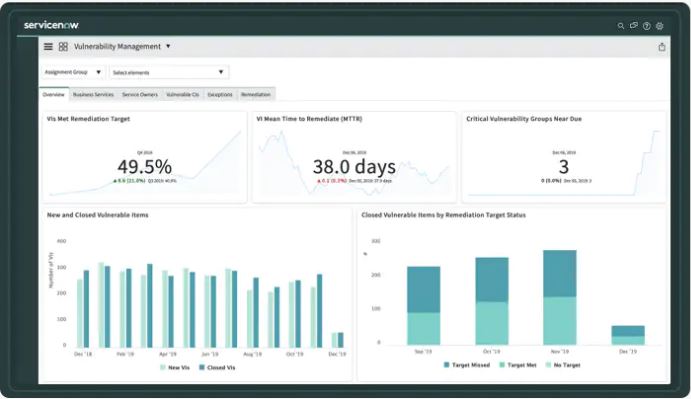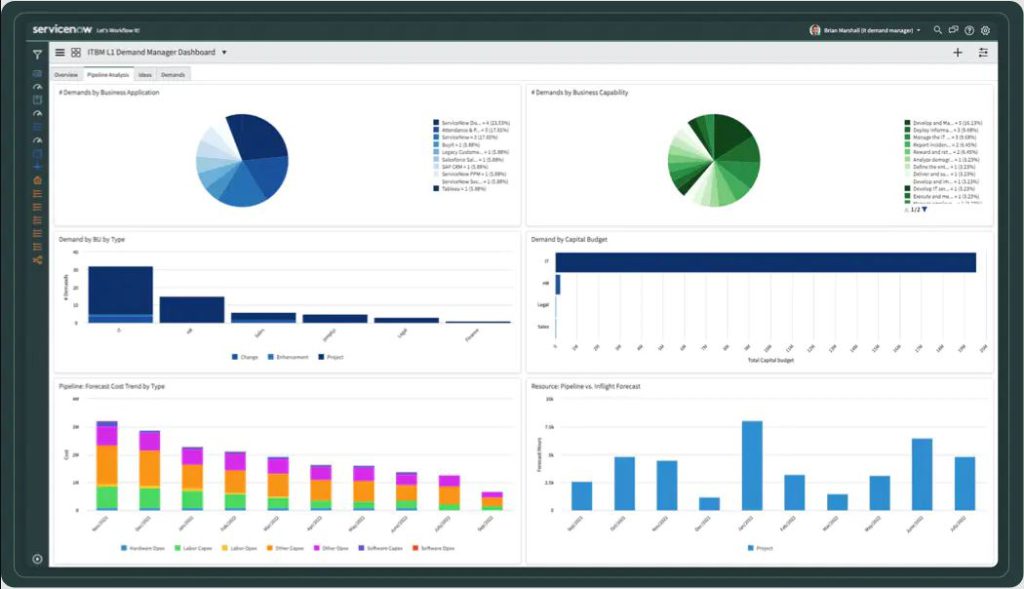ITSM implementation might be tricky
IT service management projects differ in scale, the scope of activities, time and human resources investment. Although we will not find two identical implementations, the common goal is to achieve strategic business goals.
Our experience shows that some of the problems, mistakes, and challenges repeat themselves, regardless of the organization’s maturity. Here is a list of 8 errors associated with ITSM implementations, which we face most often, and best practices to avoid them or minimize their impact.
Pitfall 1: Superficial analysis of business needs
Successful ITSM implementation will change the way your business works. Clarity about the current challenges, problems you intend to address, and the expected benefits, is crucial. Mapping it requires a well-articulated business grounding. As part of developing your ITSM deployment plan, define how ITSM will directly support, fulfill your requirements, or help your business meet its needs. The more you can tie your ITSM initiative to the business mission, vision, and goals, the greater the chance of success.
While creating an RFP, many organizations are so focused on the technical aspects of ITSM tools that they fail to find the key values that explain why they are looking for this tool in the first place. Rather than collecting an extensive list of technical requirements from IT stakeholders and related processes, Gartner suggests using the MoSCoW method to clarify business requirements and avoid overly complicated checklists:
M – MUST – a requirement that must be met in the final solution.
S – SHOULD – a high priority item that should be included in the solution, if possible.
C – COULD – a desirable requirement which will be concluded if time and resources permit.
W – WON’T – a requirement that will not be implemented in a given release, but may be considered in the future.
In the introduction phase, mutual understanding is essential, especially when it comes to the organization’s functioning. Failure to obtain basic requirements and acceptance criteria (precisely described and specified) may lead to problems when receiving the partner’s implementation. Properly analyzed business needs help to avoid disappointments. Make sure your requirements are clear to your implementation partner.
During ten years of our presence on the ServiceNow market and over 250 completed projects, the vast majority of our clients knew this methodology. However, only about 50% of them skillfully used it before starting cooperation with us.
Pitfall 2: Poor communication
Gaining support for the new ITSM project is the first milestone on the road to implementation. However, it happens that the project manager does not formulate a clear communication strategy. Consequently, it may provoke internal conflicts and even stop the project. That is why it is worth deciding at the beginning of the road how the project will be communicated in terms of important statuses, milestones and essential information, directed to the company’s management. At this stage, messages regarding business benefits are equally important.
You need to be clear about who is responsible for approvals and how to approach them, so that project progress does not slow down. At this point, you should analyze the needs of all system users, without narrowing down the target group. Effective communication means using various channels and techniques – from internal marketing campaigns, mailing, to articles on the Intranet, information campaigns in the workplace, or even employee engagement programs through gamification. This approach has the power to effectively guide you towards your goals, streamlining collaborative practices, and holistic work, all while promoting transparency and building relationships based on trust.
Change management is as crucial as skillful project management. Even the most technically successful ITSM implementation may be a disaster if it is not communicated correctly. The organization should be adequately prepared to benefit in the long term from the implementation.
Pitfall 3: No training phases
ITSM functionalities workshops and trainings (e.g. ITIL, incident, problem training, etc.) are critical. Why? Because they create a connection between the organization’s professional role and the overarching strategic goals. Without proper training, people will make decisions in an incompetent way, based on their experience. That kind of knowledge is valuable, but the opportunity to become a strategic business partner results from best practices that have already proven themselves in the industry. Service and support personnel may also require training in management, meeting facilitation, negotiation, and project management.
Remember that ITSM tools training is not a one-off as the processes are improved continuously. You should provide it to both new employees and those who need to refresh their knowledge. The training saves time for IT users and end-users, supporting tool optimization, thus increasing their efficiency and productivity. It can also turn out to be a source of feedback, which translates into new business requirements. It is an excellent way to obtain information from users (both IT and Business). And if you do it right, employees will notice and appreciate that you respect their time and help them work more productively.
The concept of implementation should be refined and prepared on time by appropriate specialists. Nevertheless, it is worth paying attention to differences in the training of key users and end-users and various methods, such as training the trainer, which helps build internal competencies or self-paced training. Initial training, prior to project implementation, also brings value. It can improve the understanding of everyday life problems, increase the level of acceptance of the tool, obtain feedback from the business, and promote the new initiative.
Pitfall 4: Flawed change management
Change management is usually underrated. Many companies neglect this aspect, especially when it comes to ITSM system change. When a company moves to a higher-class platform, it often wants to use ready-made solutions and the best practices associated with them – which means organizational changes. An equally common mistake in managing change is that company leaders do not involve managers in implementing, promoting, and facilitating the changes that must occur. We need to bear in mind that it is a creative process that all employees should be involved in as their feedback is essential. You should use these inputs to design future changes that will reduce the workload for your employees.
The implementation of a new or replacement ITSM solution can be a giant leap for growing organizations. It is human nature to resist change, especially if you have not clearly stated your motivation or communicated the value it will bring to your business. For these reasons, your team must be involved.
During ITSM deployment projects, companies spend a lot of time discussing how to accurately configure the system to fit the organization’s current structure but rarely pay enough attention to how the system will handle scenarios such as reorganization, growth, and mergers. If the ITSM system is optimized for change, it does not matter if the current implementation is correct as it is easily adaptable. However, since the system is implemented based on a static organization, supporting changes turns out to be complicated. Change management helps align IT operations with business goals. We can say that it is a critical factor in transforming your organization from a mere service provider into a business innovator.
Pitfall 5: Unordered processes
Lack of standard, documented ITSM processes, and the definition of the group of people involved in the process turns out to be a common problem. It is worth defining the responsibility matrix (RACI) from the beginning. This way, you will significantly facilitate and improve cooperation with the implementation partner.
Moreover, the lack of description of the existing system and integration with third-party systems is a big challenge. Indeed, unstructured processes do not follow a specific pattern, and you cannot model them in advance. But that doesn’t mean they can’t be documented and optimized. Unstructured processes are highly information-dependent, and much of this information (such as documents, e-mails) is probably already stored by the organization. Enterprise Content Management (ECM) modules provide collaboration, capture data, and offer many other capabilities used for managing unstructured processes. Knowledge base, forums, collaboration tools, an application for versioning or processing documents – these are the solutions we recommend to our clients.
With the change of the environment, some data in the ITSM system becomes obsolete. In such a situation, you need a process and a set of rules to systematically delete old data, archiving those elements that have analytical potential. At the same time, it will keep the operating system ‘clean’. Most companies wait to encounter performance issues before implementing a data archiving and cleaning strategy on their ITSM system. However, if you think about it in advance, it is easier to avoid negative performance impacts.
Using efficient and agile processes based on guidelines and best practices that allow for flexibility might become helpful. Larger organizations should remember that the workflow goes through many departments, which may create an additional challenge. Process management tools ensure that each department has an owner, the process is transparent, and guidelines and best practices become available to everyone. Therefore, it is possible to measure both the process and the organization, draw conclusions, set ‘thresholds’, and aim at continuous development. The first step to success is realizing that the real purpose of the ITSM initiative is to establish a collaborative and effective cross-domain approach that operates within the internal and external IT value chain. Tools are simply a means to an end, not an end in themselves.
The established structure is to ensure supervision and the method of approving the proposed changes or improvements. To avoid problems, external suppliers should be included in the processes and their management structure.
Pitfall 6: Never-ending prototype phase
A key feature of prototyping is the possibility of partial, iterative presentation of the project’s final result. It happens that this phase is protracted, and the developed prototype turns out to be too complex. Consequently, it doesn’t bring enough gains to make up for the time spent on developing. Users can get stuck in debates over prototype details, pausing the team and delaying the final product’s implementation. Rapid prototyping allows errors to be adopted as a means of learning and improving. In such a case, you should assume that not everything goes well the first time and that innovative breakthroughs result from failure.
Prototypes go through many iterations where user feedback is taken into account, and changes are made to arrive at an effective end-solution. Therefore, it is worth setting a specific, limited time to create a prototype and release it for users’ testing. Prototyping aims to generate experience, get feedback, and make continual changes to achieve a better solution. Always try to balance the benefits of frequent focusing on continuous improvements and the costs.
Pitfall 7: Far away from standard
The temptation to transfer the current functionality of an IT system to a new one can be huge. But it is associated with replicating the same, not necessarily correct or valuable functionalities and wrongly designed processes. It may result in an excessive number of extensions to the standard functionality provided by the software manufacturer. As a consequence, you will see an increase in the costs of implementing, testing, and maintaining an ITSM (TOC – Total Cost of Ownership) solution.
When you choose non-standard paths, with a high level of customization, the upgrade process becomes complicated. Depending on the company’s changes, the effects may include testing regression or rewriting the custom code. That is why the best approach is to deviate from many changes in the tool or limit them as much as possible, making the (frequent) update and maintenance process as simple as possible. Our experience shows that relying on available and proven solutions is the right approach for most companies. It does not mean implementing 100% of the basic version as minor changes are needed to reflect specific customer requirements. The victory comes with the right balance. We recommend following best practices while making configuration changes, which allows smooth system updates performance.
Pitfall 8: No process automation
One of the key benefits of implementing the ITSM system is increasing the efficiency of data management processes. The ones that consume time and energy of employees result from the lack of automation, which is a response to optimal time management. In practice, it means limiting manual work, improving the interface (both for operators and end-users), and service speed. Besides, automation makes it easier to provide operators with information in the right context, increases self-service, and proactively prevents breakdowns. At the same time, employees are more satisfied with a tool that eliminates less exciting and repetitive tasks.
When you ignore the possibility of process automation, it will probably cause you the added value of investing in the ITSM by perpetuating manual processes and replicating them in the system. In such cases, implementing a new IT platform is slowed down, and the platform itself begins to be seen as inefficient. You can easily avoid it, with the help of automation.
Checklist: what to remember while implementing ITSM?
- Prepare a list of critical functionalities and set the expected order/priority for their implementation (remember about the sequence in the process!).
- Focus on a clear definition of strategies and organizational and business goals (IT for Business, not IT for IT).
- Choose only tools and processes that are necessary to achieve ROI.
- Bet on well-thought-out communication.
- Create an internal team that will quickly and efficiently support the implementation partner team.
- Conduct the right training at the right time.
- Manage change proactively.
- Document and optimize processes by assigning owners at the very beginning of implementation.
- Implement a strategy for archiving and cleaning data in the ITSM system.
- Choose available and proven ITSM solutions, without unnecessary changes in the system and deviations from best practices.
- Where possible, take advantage of process automation.
Fill in the form to download the checklist.
More resources
Here’s the list of materials related to today’s article that might come in handy for your process as well:
If you want to learn more about the most powerful methods of conducting a successful ITSM implementation or share your observations, drop us a line!
